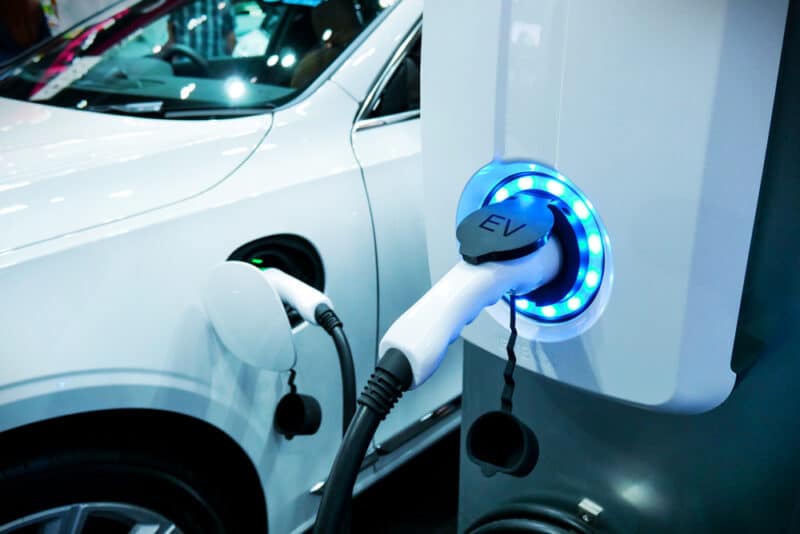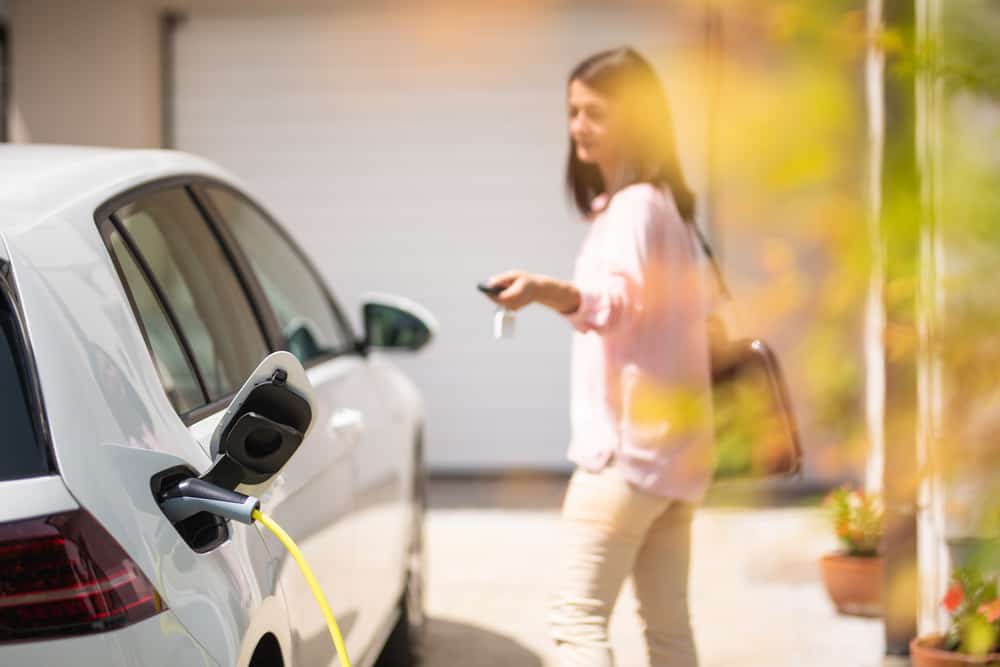Blog
What Are the Pros and Cons of Electric Vs. Gas Vehicles in the Pacific Northwest?

You or younger family members will almost certainly see the day when electric vehicles, or EVs, will rule the road in the Pacific Northwest. The technology is heading in that direction, though rather slowly. Is this a good thing?
Both transportation modes have pros and cons, including the impact on your auto insurance rates. In some cases, it’s hard to tell which mode of transport has the advantage, but here’s where things seem to stand at this point in time.
Electric Vehicles Are (Mostly) Kinder to the PNW Environment
The whole reason that the world is going through this sea of change is the nasty impact that gas vehicles have on the environment. Atmospheric carbon dioxide, or CO2, is spewed into the air from the exhaust of fossil fuel-burning engines.
High concentrations of CO2 contribute to climate change, which damages the planet and causes all kinds of health and safety hazards for us earthlings.
Electric vehicles run without any tailpipe emissions. They leave no carbon footprint in operation whatsoever. So that makes them the hands-down winners in the environmental sweepstakes. Right? Well…
While EVs run clean, there are environmental strikes in the production and disposal of electric batteries and obstacles to fully “clean” recharging. And recharging at home can lead to hefty increase in your home’s electric bill, not to mention changes to your wiring which could have an impact on your home insurance. Let your insurance company know if you will be charging an EV at home.
Mining for Battery Components
The production of lithium electric batteries involves problematic mining of raw materials. Lithium mining, for instance, is a water-intensive process often conducted in areas of the globe where water availability is already limited.
The mining of cobalt, another raw ingredient, can spew byproducts into the atmosphere and contaminate water systems.
While the rest of the manufacturing process of fossil-fuel and electric vehicles have the same rate of damage to the environment, the negative impact from battery production alone makes the manufacture of electric vehicles emit as much as twice the amount of greenhouse gases as conventional autos.
Questionable Energy-Generating Methods for Battery-Operated Cars
While the EV battery is certainly a more earth-friendly option than fossil fuel use, it depends on how the electricity that powers the battery recharge is generated. If it comes from such renewable resources as wind, solar, or hydraulic power, it’s truly clean. If the local energy grid is fueled by coal, the recharging process actually puts more carbon dioxide in the air.
At the end of the battery’s life, there’s a huge difference in environmental impact. Conventional car batteries are lead-based and about 99% recyclable. On the other hand, the lithium in the EV battery is only 1% reclaimed by current techniques. That means landfills might soon be filled with EV batteries unless new technologies come along to increase their recyclability.
Despite all of these drawbacks, the fact that electric batteries have no tailpipe emissions over the life of the vehicle still makes them more green for the planet than gas vehicles. It’s just that it’s not quite the environmental no-brainer as it might first seem to fill the streets and highways with nothing but EVs.

Gasoline-Powered Vehicles Run a Narrow Cost Advantage in the PNW Over EVs
The sticker price of a new electric vehicle averages around $10,000 more than that of gas vehicles. However, keep two points in mind.
First, the federal government and some Pacific Northwest states offer tax credits that can reduce the sticker price for some EV models by thousands of dollars, including:
- Oregon is offering from $2,500 to $7,500 in rebates for residents who go electric.
- Washington is proposing a variety of rebates for EV purchases that range from $1,000 for an e-bike up to $7,500 for a new EV.
- Idaho does not currently offer financial incentives for people to buy an EV. Idaho does exempt these owners from vehicle inspections.
And second, consider how much you paid for your first computer many years ago compared to what one costs today. The point is, technological developments can be expected to reduce the cost differential, probably considerably.
What about the cost of refueling versus recharging? A 2018 study by the University of Michigan’s Transportation Research Institute showed the annual average cost to recharge an electric battery at your home to be $485, compared to the average yearly expense of $1,117 to pump gas.
However, a more recent calculation showed EV recharging to cost more when drivers must regularly use commercial chargers. That’s because commercial charging can cost as much as four times what it costs to recharge your vehicle from your residential utility account.
Therefore, if you’re able to charge exclusively at home while you sleep, you’ll probably save money over gasoline costs. But if your driving patterns mean that you’ll frequently have to charge your electric battery while on the road, you could pay hundreds of dollars a year more.
The Mechanics of Gas Vs Electric in the Pacific Northwest
Since the EV is a more mechanically simple machine than a gasoline-powered vehicle (except for that battery), you’ll likely experience less downtime and expense getting your EV serviced. On the other hand, that repair bill is higher for EVs when you do need to call a mechanic, although you can add some optional protections to your auto insurance so you won’t have to pay extra if you do need a tow.
And it can cost several thousand dollars to replace an electric battery. That’s much more than you’ll pay for a replacement conventional car battery.
So at this point, gasoline-powered cars cost less to buy and, often, less to run and maintain. But improvements in EV technology are almost certain to narrow or even reverse that advantage in the long run.
Gas Vehicles Win the Convenience Competition Hands Down (For Now) in the PNW
It might not literally be true that there’s a gas station on every corner, but it sure seems that way. Especially compared to the scarcity of commercial chargers in the wild. In the Pacific Northwest, charging stations are here and there. Oregon, Washington and Idaho were all beneficiaries of funds from the recent Bipartisan Infrastructure Law that was signed in November 2021 to build more charging stations along their highways. Meanwhile, the number of current charging stations may give those who drive a lot some food for thought.
- Oregon: According to Go Electric Oregon, there are nearly 1,600 public charging stations.
- Washington: According to West Coast Green Highway, there are numerous fast-charge stations every 40 to 60 miles along I-5 in Washington, as well as other stations on US 2 and I-90. Here’s a handy map that shows locations all over the U.S.
- Idaho: According to Liberty Access Technologies, there are currently 99 charging stations in Idaho for public use.
There are numerous apps you can download to find the nearest charging station, as well as pay for your charge.
Of course, this isn’t a factor if the EV driver has the option of always recharging at home. And the availability of commercial charging stations will grow over time as EVs become more common.
But then there’s this: it can take up to eight hours to fully recharge an electric battery at home. Some EV-charging stations have a fast-charge option, but it will only work on certain car models. Compare that with the five or ten minutes you’ll spend at a gasoline-filling station. Even just getting a partial battery charge on the road can take 30 minutes. How convenient is that?
Again, expected technological improvements to the electric battery should greatly reduce the recharging time eventually. But for now, gas engines win for convenience.
Auto Insurance Costs More in the PNW for Electric Vehicle Owners
One recent study showed that the owners of EVs pay about 15% more, on average, for their car insurance than those who drive fossil fuel vehicles. Among the leading reasons for this are the fact that EVs are more expensive to repair, and the batteries are particularly costly to replace.
If you’re trying to insure an EV, start by consulting a knowledgeable independent insurance agent. Independent agents don’t work for one single insurance company, so they can shop for the best rates from multiple carriers. This is likely to be especially critical if you’re looking to find low-cost car insurance for your EV.
What’s the Bottom Line for Gas vs Electric in the PNW?
Electric vehicles are better for the environment than gas-powered cars, but they’re likely to be more expensive and less convenient — at least for now. However, the gap is likely to narrow over time as EV technology improves in several areas.
Find Affordable Auto Insurance for Your Gas or Electric Vehicle Today
Regardless of what you choose to drive, your Vern Fonk independent insurance agent will find you the most affordable car insurance available. Call us at (800) 455-8276 or get a quick quote online for low-cost car insurance. You can also find a Pacific Northwest office near you.


